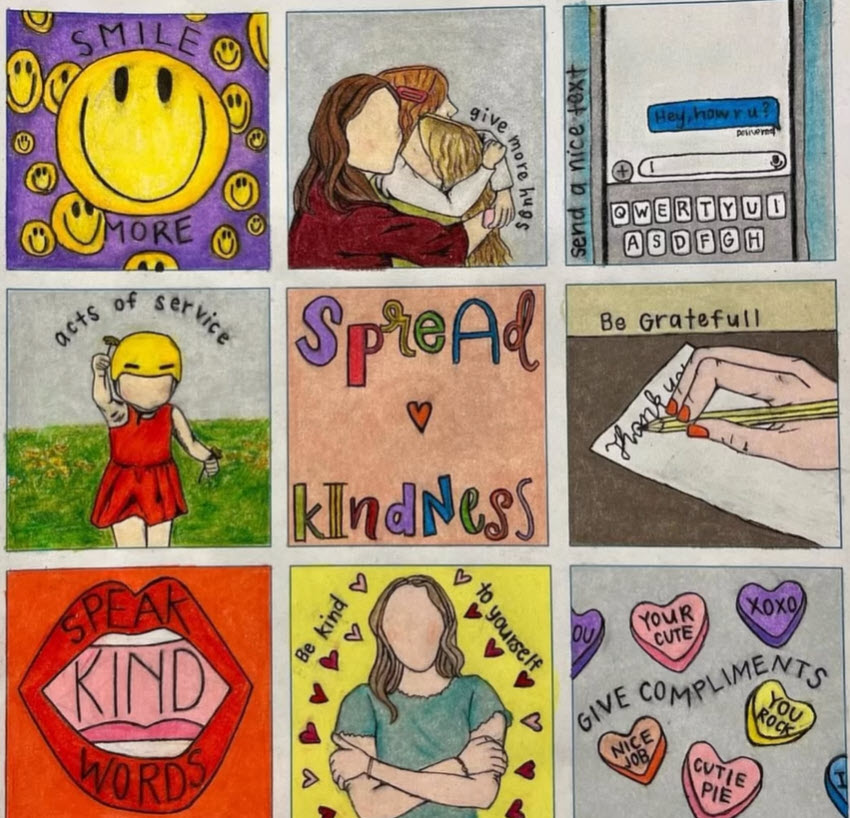Tom Kuhn, CEO of Qnity – an organisation offering education and tools for economic empowerment in the beauty industry – ran an excellently practical workshop at the 2024 Salon Owners Summit.
Addressing the room, Tom asked, “Who here is an ‘ideas person’, but finds their ideas rarely make it to fruition?” Unsurprisingly, in a room full of creative minds, most people raised their hands. If this sounds like you too then keep reading – in this recap blog we’ll share some of the tools and tips Tom covered in his workshop, aimed at helping the creative ‘ideas person’ get ideas out of their head, onto paper, and divided into actionable chunks.
The Qnity 9Grid: Get Ideas Out of Your Head and Onto Paper
Firstly, Tom introduced the ‘Qnity 9Grid’ to the room. When described, the 9Grid sounds deceptively simple – quite literally, it is a sheet of paper with a grid of 9 empty boxes, organised in 3 rows of 3.

But there is quite a bit of psychological reasoning behind the grid:
- According to Cognitive Psychologist, George Miller, our short-term memory can only hold on to 5-9 chunks of information. So each grid represents a chunk of information. When using the 9 grid to create a to-do list for example, any more than nine would be overwhelming to our short-term brain, increasing the probability that nothing will get done
- The layout of 3 rows of 3 also connects back to David Meade’s talk at this year’s Salon Owners Summit when he discussed the ‘Power of Three’ in the psychology of persuasion – three is also a powerful number for our short-term memory, the optimal number for a collection of information. There is also the ‘Rule of Thirds’ that artists use to compose the most captivating images. Our brains respond well visually to chunks of three
- Another element of beauty behind the design is that it forces you to put your ideas to paper – the mere act of writing ideas down creates a strong link to help you own and retain the information, and increases the likelihood that you will put it into action
- Finally, it is a visual communication tool – perfect for the visual learners in the salon industry. You can make the grid as creative as you like – just check out Qnity’s Instragram page to see some incredibly creative examples like the one above!
The 9 boxes can be used in three different formats –

- The ‘Mind Map’ allows you to put your core idea or challenge at the centre and brainstorm the solutions or steps needed to get your to your goal
- The ‘Step by Step’ allows you to be more sequential about that process – once you have all your ideas from the Mind Map, you can put them into a logical sequence with this style of 9Grid
- The ‘Storyboard’ helps you visualise the process for three unique concepts or three options you may have presented to you.
Organise your To-Do’s with the ‘Five Functions of Business’
Now that you have all your ideas on paper, it’s time to organise them into manageable chunks.
Tom used the analogy of arriving to work and seeing your desk with piles and piles of paper – it’s difficult to know what to work on first. Most of us will often find ourselves starting to do one thing, only to get distracted by another task. Before we know it, many things are started, but nothing is completed.
According to Tom, “Businesses that have a clear process to execute their desired plan outperform competitors by as much as 120%.”
Tom believes there are five distinct functions of business that every salon owner needs to be across, and all of the tasks that build up on our desks will fall into one of these functions.
The ‘Qnity Five Functions of Business’ are:
- Marketing – all things customer-facing to attract and retain clients
- Education – everything your team needs to perform well
- Finance – keeping your eyes on money in and money out
- Operations – the daily activities in the salon, from open to close
- Human Capital – managing and developing the people in your business
By organising your ideas and to-do lists into these functions, you can divide the time in your week/month/quarter to ensure you’re giving each one the focus it needs, increasing the number of tasks and projects that get completed (not just started!).
System for Execution = Plan + Do
So now you have your ideas on paper, and chunked into manageable to-do lists. It’s time to get them done!
Some projects may have sub-tasks that fall into different functions – for example, getting online booking set up will require an ‘Operations’ task to get it set up on your Phorest salon software system, and a ‘Marketing’ task to run a campaign to let your clients know how easy it will be for them to book and reschedule their own appointments.

Tom shared another (deceptively) simple worksheet to help salon owners and managers execute their plans. His top tips were to:
- Break down your projects into clear and concise tasks within their respective function
- Decide who is responsible and assign the task to them
- Be clear about when it needs to be done
What Will You Accomplish Next?
And there you have it – with the Gridy art of getting things done, you can take the ideas swimming around your mind, put them onto paper, flesh them out, categorise them, break them into manageable pieces, and createa clear path to implementation! For more information about Qnity’s tools for execution you can visit https://qnityinc.com/
Feeling the Salon Owners Summit FOMO?
Want to make sure you’re in the room to hear insightful talks like this next year? Get your tickets for the next Salon Owners Summit!
Keep Learning from the Experts
Read more of the 2024 Salon Owners Summit Recaps.



